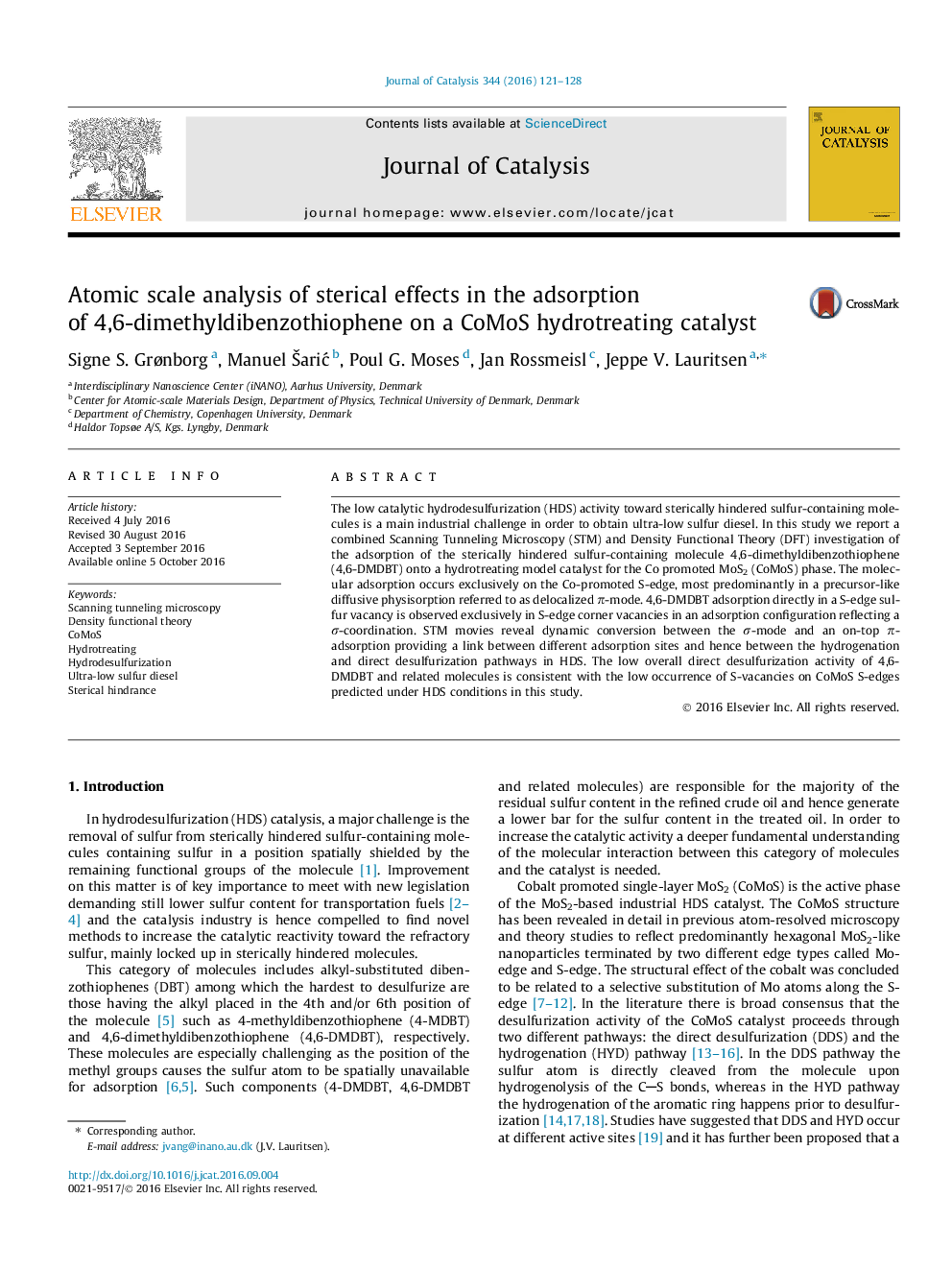| Article ID | Journal | Published Year | Pages | File Type |
|---|---|---|---|---|
| 6455760 | Journal of Catalysis | 2016 | 8 Pages |
â¢Atomically resolved scanning tunneling microscopy reveals 4,6-DMDBT adsorption on CoMoS.â¢The sterically hindered molecule 4,6-DMDBT adsorbs in two configurations on promoted S-edges.â¢Corner S-vacancies in CoMoS have special affinity for adsorption.â¢Dynamics between the Ï-mode and Ï-adsorption reveals a link between different HYD and DDS pathways.â¢Low direct desulfurization activity may be due to low occurrence of S-vacancies on CoMoS edges.
The low catalytic hydrodesulfurization (HDS) activity toward sterically hindered sulfur-containing molecules is a main industrial challenge in order to obtain ultra-low sulfur diesel. In this study we report a combined Scanning Tunneling Microscopy (STM) and Density Functional Theory (DFT) investigation of the adsorption of the sterically hindered sulfur-containing molecule 4,6-dimethyldibenzothiophene (4,6-DMDBT) onto a hydrotreating model catalyst for the Co promoted MoS2 (CoMoS) phase. The molecular adsorption occurs exclusively on the Co-promoted S-edge, most predominantly in a precursor-like diffusive physisorption referred to as delocalized Ï-mode. 4,6-DMDBT adsorption directly in a S-edge sulfur vacancy is observed exclusively in S-edge corner vacancies in an adsorption configuration reflecting a Ï-coordination. STM movies reveal dynamic conversion between the Ï-mode and an on-top Ï-adsorption providing a link between different adsorption sites and hence between the hydrogenation and direct desulfurization pathways in HDS. The low overall direct desulfurization activity of 4,6-DMDBT and related molecules is consistent with the low occurrence of S-vacancies on CoMoS S-edges predicted under HDS conditions in this study.
Graphical abstractDownload high-res image (125KB)Download full-size image
